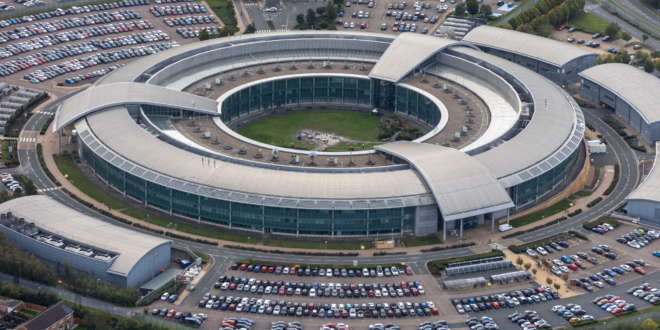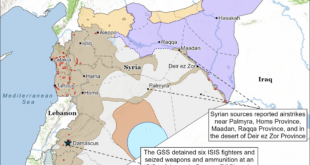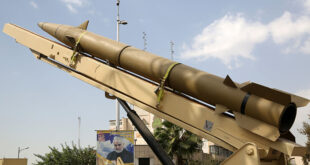The UK has spent decades trying to subvert Iran’s government, but also secretly sold them chemical weapons and spied on opposition activists.
As bombs fell on Iran this week, the UK government claimed it had “not participated” in the military action led by Israel and the US.
But British spy agencies have a long history of meddling in Iran, with everything from covert influence operations, to secretly selling chemical weapons materials to the regime.
In one case, the UK spy agency GCHQ even created a network of fake Twitter accounts to secretly monitor Iranian opposition activists – the very people working to remove supreme leader Ayatollah Ali Khamenei from power.
Coup
British spies have targeted Iran for decades, driven by commercial profit and regional control.
In 1951, when the country’s secular prime minister, Mohammed Mosaddeq, nationalised the British Anglo-Iranian Oil Company (later known as BP), the British ambassador wrote: “It is so important to prevent the Persians from destroying their main source of revenue…by trying to run it themselves.”
Two years later, the UK and US secretly backed a coup to oust Mosaddeq and centralise power under a repressive “pro-western” regime.
Declassified files have since revealed the central role played by MI6, who recruited agents and bribed members of Iran’s parliament. In doing so, one former spy claimed they spent “well over a million and a half pounds”.
The UK and US then supported Iran’s dictator, the Shah, for the next 25 years.
By 1979, the Iranian Revolution saw the establishment of the Islamic Republic led by another dictator, Ayatollah Khomeini. But this did not stop British spies from collaborating with the regime when it was in their interests.
For instance, in 1983, British intelligence provided Khomeini with a list of Iranians allegedly working for the Soviet Union. The intelligence was used to round up over 1,000 communists, as many as 200 of whom were executed. Meanwhile Iran’s communist party, the Tudeh, was banned and forced underground.
Secret relations were again exploited in the early 1990s, when MI6 helped supply Iran with materials to make chemical weapons – despite its own ban on such sales.
Britain’s aim was supposedly to use the deals as a way to insert operatives into the Iranian government and gather intelligence about its weapons programmes.
Cyber warfare
Under Tony Blair’s premiership, phone hacking and cyber warfare became an ever-more important part of UK spy operations against Iran.
From around 2005, Israel and America worked together to develop the notorious Stuxnet computer virus attack, which has been described as “the world’s first digital weapon”.
It was used against Iran’s nuclear facilities four years later, and reports have claimed British intelligence agencies played a role.
And in 2007, GCHQ intercepted telephone conversations that proved Iran had stopped work on its nuclear weapons programme four years earlier.
Despite his government being the victim of espionage, Iranian president Mahmoud Ahmadinejad actually celebrated the disclosure, saying it had left the west “empty handed” following the “lies of nuclear weapons”.
It also triggered a re-evaluation of US policy towards Iran, although George W. Bush – who was president at the time – continued to warn about the threat posed by Tehran. “What’s to say they couldn’t start another covert nuclear weapons programme,” he told reporters.
JTRIG
Perhaps the UK’s most audacious and troubling operations of this era were run by a specialist GCHQ unit called the Joint Threat Research Intelligence Group (JTRIG).
Documents leaked by Edward Snowden show how JTRIG targeted the “general population” of Iran between at least 2009 and 2011.
Its work included “discrediting the Iranian leadership and its nuclear programme”, causing disruption to the nuclear programme, conducting human intelligence operations online, and counter-censorship campaigns.
A report from 2011 explains: “JTRIG staff use a range of techniques to, for example, discredit, disrupt, delay, deny, degrade, and deter.
“The techniques include: uploading YouTube videos containing persuasive messages; establishing online aliases with Facebook and Twitter accounts, blogs and forum memberships for conducting HUMINT [human intelligence] or encouraging discussion on specific issues; sending spoof emails and text messages as well as providing spoof online resources; and setting up spoof trade sites.”
Lurl.me
Another leaked document, published by NBC News in 2014, shows how JTRIG tracked down the location of targets using a URL-shortening service they made specially, called lurl.me.
This allowed spies to send innocent-looking web links to individuals, and ultimately gain access to their IP address, emails and social media.
Incredibly, JTRIG’s use of lurl.me can still be found online today. The links were posted by a network of fake Twitter bots which became active around the 2009 Iranian presidential election.
But rather than targeting Khamenei’s repressive regime, the tweets are aimed at anti-government activists. They call for a revolution and provide links to internet proxies, western news outlets and websites blocked by the Iranian government.
It appears that JTRIG was trying to encourage dissent while also secretly monitoring the dissenters.
Around the same time, the unit also had access to a vast catalogue of other cyber warfare tools – although it is not known which were used against Iranian targets.
The tools covered everything from online honeytraps and spoofing email addresses, to changing the outcome of online polls and amplifying messages on YouTube.
British spy operations like these were not done in isolation. Documents from 2013, published by WikiLeaks, revealed how GCHQ “long advocated that it work with NSA and the Israeli SIGINT Service (ISNU) in a trilateral arrangement in prosecuting the Iranian target.”
‘Palestinians’
Other documents make clear that “Palestinians” were one of the “specific intelligence topics” that are shared between GCHQ agents and their counterparts in America and Israel.
The document adds that, due to the “sensitivities” of Israeli involvement, the programme does not include direct targeting of Palestinians themselves.
By 2012, the then head of MI6, Sir John Sawers, boasted that Iran had been prevented from developing nuclear weapons thanks to covert operations by British spies.
Sawers admitted that MI6 had “run a series of operations to ensure that the sanctions introduced internationally are implemented, and that we do everything we can within the Middle East to slow down these remaining problems”.
But leaked emails show that officials within the Obama administration reacted with dismay when Sawers’ comments were made public.
Hilary Clinton, who was then secretary of state, replied: “Gobsmacking!”, while one of her officials described the disclosure as “most unfortunate on many levels to say the least”.
Iran nuclear deal
America left the Iran nuclear deal in 2018, but the UK remains a member. This might have restrained British spies, but instead they have quietly found work-arounds that prevent the deal from being jeopardised.
For instance, in 2018, MI6 reportedly helped an Iranian nuclear scientist defect to the UK. But instead of flying him directly, they smuggled him in by infiltrating a group of migrants, who crossed the English channel in a dinghy.
Iran was later named as one of the two main targets of a new unit called the National Cyber Force, run jointly by GCHQ and the Ministry of Defence. Set up in 2020, its tactics included launching “covert operations” against IT networks and trying to “influence hostile actors”.
And in May this year, the government announced that the unit would work alongside a new Cyber and Electromagnetic Command, to “put the UK at the forefront of cyber operations”.
Meanwhile, a GCHQ base near Iran has undergone major construction work. Satellite imagery analysed by Declassified last year showed building work at the site in Oman, the pro-British autocracy located between Iran and Yemen.
At the time, a GCHQ spokesperson said: “We’re not able to comment on operational matters.”
 Eurasia Press & News
Eurasia Press & News




